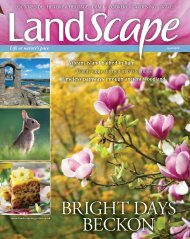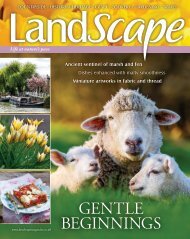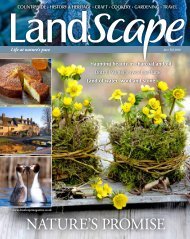Practical Photography
You also want an ePaper? Increase the reach of your titles
YUMPU automatically turns print PDFs into web optimized ePapers that Google loves.
Feedback<br />
Shooting at<br />
eye-level has<br />
made the pic<br />
intimate and<br />
engaging<br />
Portrait of a leopard<br />
by Athula Dissanayake<br />
During an early morning<br />
game drive in the Yala<br />
National Park, Sri Lanka,<br />
I spotted this big male<br />
leopard by the road. I<br />
anticipated some action,<br />
so I set up my Canon 70D and 500mm<br />
lens, and then waited. It eventually got<br />
up to stalk a buffalo calf, providing a<br />
frame-filling shot with an intense<br />
stare. I steadied the lens on a beanbag<br />
to reduce camera shake. In Photoshop<br />
I boosted the brightness, contrast and<br />
sharpening.<br />
500px.com/athuladis<br />
Dan says: It’s not every day that readers<br />
send in a picture of a leopard. Athula’s<br />
big cat has a piercing gaze, which is<br />
sure to turn heads. He focused on the<br />
eyes to make sure these were the focal<br />
point and they’re incredibly sharp.<br />
This is partly thanks to Athula’s first-rate<br />
camera gear, but also because he used<br />
a fast shutter speed and a beanbag to<br />
reduce camera shake. Getting down low<br />
to the leopard’s eye-level adds intimacy.<br />
Shooting from ground-level is the easiest<br />
way to make your wildlife pictures more<br />
engaging. It may mean getting muddy<br />
clothes, but it doesn’t cost a penny.<br />
There’s some fantastic bokeh<br />
(background blur) in this image,<br />
which is full of autumnal shades of<br />
Turn down the noise<br />
Canon 70D | 500mm | f/4.5 | 1/640sec | ISO 800<br />
brown and yellow. This complements<br />
the leopard’s coat to a tee.<br />
Although this picture is amazingly<br />
sharp, there’s a fair bit of digital noise.<br />
This may be because sharpening has been<br />
applied across the whole image, so the<br />
background noise has been sharpened<br />
too. In RAW editing software you can add<br />
a Sharpening Mask and Noise Reduction<br />
to make this less apparent (see panel).<br />
The leopard’s nearest eye falls in<br />
the middle of the shot, where the more<br />
reliable central active AF point was<br />
positioned. This has ensured the eye is<br />
in focus, though some additional ‘active’<br />
space in front of the leopard would make<br />
for a stronger composition, giving the<br />
impression it has room to move in to.<br />
Digital noise is more obvious in pictures taken<br />
with a high ISO value. Reduce this in Lightroom<br />
by going to the Develop module and finding the<br />
Detail tab. Under Noise Reduction set the<br />
Luminance slider to 30 to remove noise across<br />
the whole pic. Set the Sharpening Amount to 50<br />
to bring back detail. Hold the Alt key down and<br />
adjust the Masking Slider. Tweak the slider until<br />
areas to sharpen are shown in white – this stops<br />
you from sharpening the background noise.<br />
114 PRACTICAL PHOTOGRAPHY

















